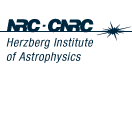|
|
|
|
|
|

|
Dr Gerhard HerzbergThe Herzberg Institute of Astrophysics was named in honour of the late Dr. Gerhard Herzberg, renowned physicist, chemist and astronomer.
Known worldwide as the father of modern molecular spectroscopy, Dr. Herzberg advanced this study of the patterns of light emitted by atoms and molecules into an important tool for scientific investigation into areas as diverse as physics, chemistry, astrophysics, materials, biology and medicine. In 1971, Dr. Herzberg received the Nobel Prize in Chemistry for a lifetime of achievement in molecular spectroscopy, culminating in his discovery of the spectrum of methylene (a free radical and transient intermediate molecule with a very short lifetime in chemical reactions). His discoveries in astronomy enlarged human knowledge of the atmospheres of stars and planets, while his research into spectroscopic properties and electronic structure laid the groundwork for precise quantum mechanical descriptions of small molecules. Even though he always regarded himself as a pure scientist, his discoveries about the oxygen molecule had proven implications for the study of cancer and his work on free radicals laid the foundation for studies of chemical reactions in the upper atmosphere. During his lifetime, Dr. Herzberg received countless honours. He was a Companion of the Order of Canada, an Academician of the Pontifical Academy of Sciences at the Vatican, a Fellow of the Royal Societies of London and Canada and a member of the Canadian Science and Engineering Hall of Fame. In 1987, asteroid 3316 was officially named after him, as was a street in Kanata, Ontario. Dr. Herzberg was appointed as a member of the Queen's Privy Council for Canada on July 1, 1992. Born in Hamburg, Germany on Christmas Day in 1904, Dr. Herzberg escaped the Nazi regime in 1935 to come to the University of Saskatchewan in Saskatoon, where he spent 10 years. In 1945, the University of Chicago offered Dr. Herzberg the facilities of its renowned Yerkes Observatory, where he remained for three years. Known affectionately by everyone as "G.H.", Dr. Herzberg arrived at NRC in 1948, continuing a career that saw him supervising, influencing and inspiring scores of young scientists. NRC President Dr. Arthur Carty noted in a tribute to Dr. Herzberg that one of these young researchers had once written that: " … all of us (are) working days, nights and weekends, trying our best to keep up with G.H." "There is no question that the National Research Council (NRC) owes Dr. Herzberg a tremendous debt that cannot be put into words," Dr. Carty said. "The general integrity and scientific credibility that he brought to NRC benefited everyone in the organization and opened doors around the world." Dr. Herzberg officially retired from NRC in December 1994, following 46 years of active research there. He still held a position as Distinguished Research Scientist at NRC's Steacie Institute for Molecular Sciences at the time of his death on 3 March 1999. The following hyperlink is to a site of an organization or other entity that are not subject to the Official Languages Act . The material found there is therefore in the language(s) used by the site in question. |

|